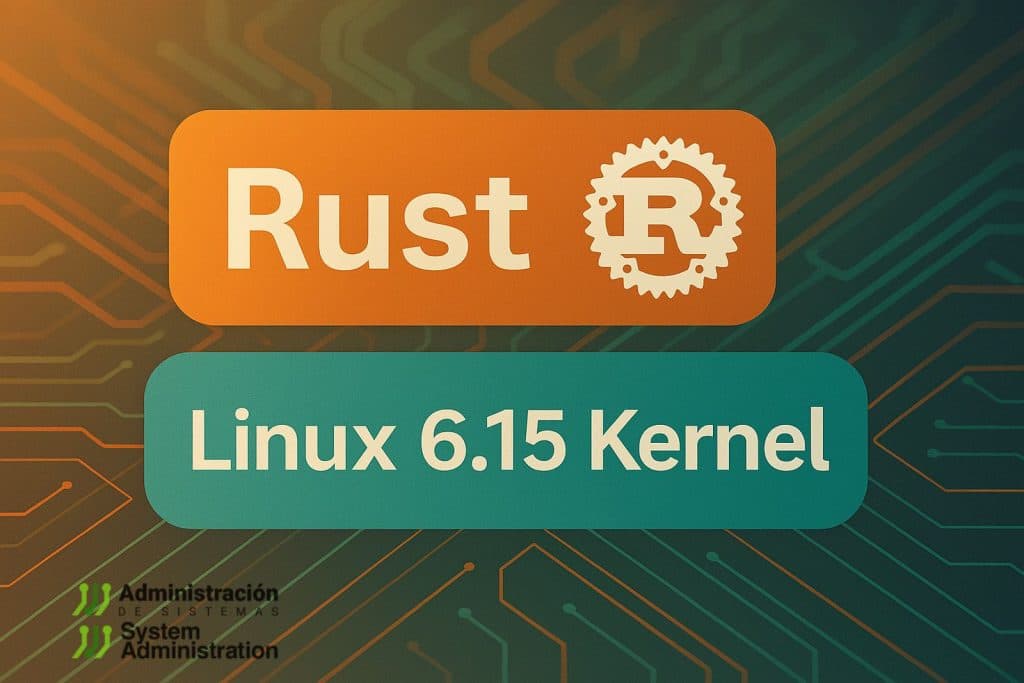The Linux 6.15 kernel has received numerous updates and improvements to its Rust programming language infrastructure, marking a significant milestone in the integration of Rust into the Linux kernel. This update signifies a step forward in the ecosystem as Rust Linux maintainer, Miguel Ojeda, accepted a pull request from another contributor for the first time, preparing the groundwork for managing sub-trees for different areas of Rust kernel code. This change sets the stage for a more organized and scalable development process as Rust continues to grow within the kernel.
Key Updates in Linux 6.15
The Rust-related updates in Linux 6.15 include a series of technical improvements aimed at enhancing the Rust integration within the kernel. Some notable changes include:
- Crate Changes: Several updates have been made to the various crates used in the Rust Linux kernel, optimizing how Rust code interacts with kernel components.
- New Modules: The introduction of HRTIMER and DMA modules within the kernel crate has added new functionality, improving the kernel’s handling of timers and direct memory access operations in Rust.
- Error Handling Documentation: There have been improvements in error handling within the Rust code, as well as enhancements to the documentation, ensuring that developers can more easily work with Rust in the kernel.
- New Reviewers: With the growing complexity of Rust code in Linux, Danilo Krummrich has been added as a reviewer for the Rust kernel code, a move that supports the expanding Rust team in managing contributions.
- DMA Mapping Helpers: A previously controversial area, the DMA mapping helpers device driver API, has now been incorporated into the new Rust alloc sub-tree, reflecting the ongoing work to improve and standardize Rust’s integration into the kernel.
- Sub-Tree Development: One of the most significant shifts in the Linux 6.15 kernel is the preparation for creating sub-trees specifically for different aspects of the Rust kernel code. This will enable more structured management of the growing Rust ecosystem within the Linux kernel, allowing for better organization and modular development in the future.
Early Stages of NOVA-Core Driver for Rust
A particularly noteworthy addition is the very early version of the NOVA-Core driver for NVIDIA graphics, which is being written in Rust. Although still in its initial stages, this driver represents the first steps toward creating an open-source NVIDIA driver using Rust within the Linux kernel. This marks the beginning of the integration of Rust into the Direct Rendering Manager (DRM) subsystem, making it a key milestone for graphics and display support.
While the NOVA-Core driver is still under development, its inclusion in Linux 6.15 demonstrates the commitment to expanding Rust’s role in areas beyond the core kernel, potentially leading to more robust and safer drivers in the future.
Linus Torvalds’ Challenges with Rust Code Merges
The merging of the new Rust code into Linux 6.15 was not without challenges. Linus Torvalds, the creator of Linux, shared his experience with merging Rust code, acknowledging his limited familiarity with the language. He mentioned that he faced difficulties during the merge process, particularly with the pin_init crate, which caused issues due to the interaction between pin::Pin and the core crate. However, Torvalds expressed gratitude for the example merges provided by contributors, using them as a learning tool to improve his understanding of Rust and its integration into the kernel.
Despite the challenges, Torvalds emphasized that the team would continue to learn and refine their approach, with contributions from the Rust Linux community being critical in navigating these complexities.
Looking Ahead: The Future of Rust in Linux
With the integration of Rust into the Linux kernel growing stronger, Linux 6.15 sets a precedent for future developments. The introduction of sub-trees for different Rust areas and the ongoing work on the NOVA-Core graphics driver indicate that Rust’s role in Linux will continue to expand, providing safer, more efficient code for the kernel.
This marks just the beginning of a long-term shift in kernel development, with Rust bringing a modern, memory-safe language into the Linux ecosystem. As the development community continues to support and refine Rust’s use within Linux, we can expect to see more contributions and better tooling in future kernel releases.
As Rust becomes more integral to the Linux kernel, the collaboration between Rust developers and the broader Linux community will be crucial for ensuring that Rust’s inclusion enhances the overall security, performance, and scalability of the Linux operating system.
The future looks promising for Rust in Linux, and with the groundwork laid in Linux 6.15, we can anticipate even more exciting advancements as the ecosystem evolves.
Source: Phoronix

